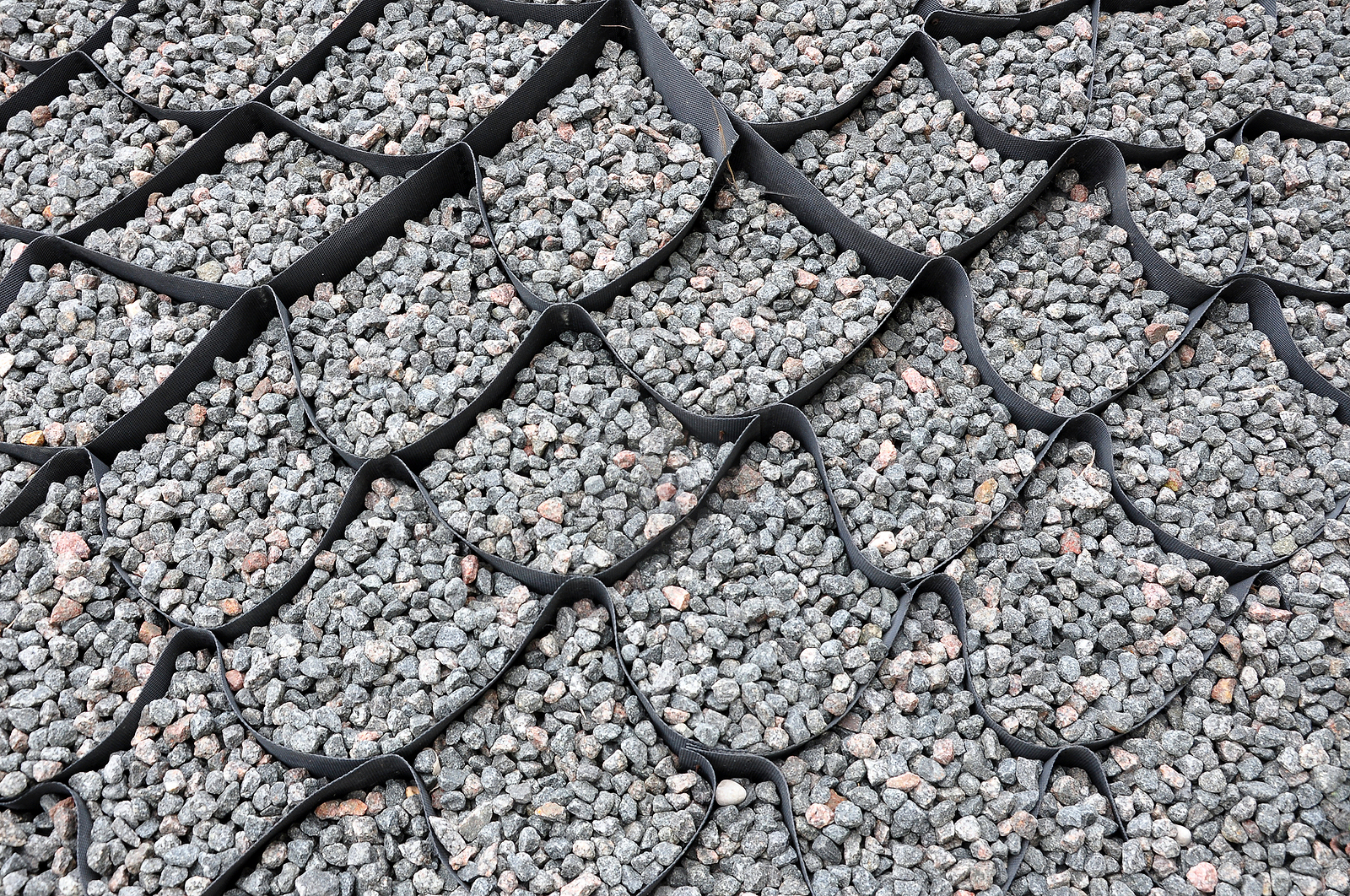
Privacy statement: Your privacy is very important to Us. Our company promises not to disclose your personal information to any external company with out your explicit permission.
The engineers discovered the benefits of using geocells as means to provide stabilization beneath their heavy equipment. They created a lightweight structure that held together loose sand and gravel to ensure safe travel across soft soils. Since then, many industries including construction, civil engineering, and the environment have taken advantage of this geocell technology, and have applied them to their own projects.

Geocell is a soil confinement product that is lightweight, expandable, and manufactured from durable high-density polyethylene. It confines and strengthens a variety of infill materials such as vegetative soil, aggregate, and concrete within the cells of its honeycomb-like structure. This honeycomb shape is the key to soil confinement success.
The honeycomb structure of Geocell cellular systems opens at the top and bottom of each cell. Whether the unstable surface is level or sloped, the sheet of geocells is laid on top and secured. Then, each cell is filled with the appropriate aggregate depending on the specific application. With the cells open at both sides, the unstable soil below mixes with the added aggregate, and the honeycombs conform to the ground`s surface. The result is a reinforced structure protected from the elements and excessive force.
Thanks to the geocell honeycomb structure of Geocell soil confinement systems, there are many effective applications, including soil stabilization, slope erosion control, retaining walls, and channel wall protection.
Geocell offers a perfect soil stabilization solution since it confines the base materials to prevent lateral movement. The geocells significantly reduce pressure and provide subgrade support in areas with soft, unstable soil. This makes it possible to apply heavy loads on access roads, parking lots, paths, and driveways.
Geocell soil confinement systems prevent soil particles on slopes from being detached and carried away with concentrated runoff streams. After factoring in the existing fill`s failure angle along with the length, height, and angle of the slope, Geocell structures can be anchored to the slope and effectively control the force of erosion.
Geocell can work together with geogrids in order to reinforce retaining walls against a steepened slope whenever a change of grade is necessary. While the geogrid acts as a tieback in the reinforced zone, geocell acts as the facing element. This lets you stack and fill geocell panels to create vertical, heavy, and reinforced retaining walls.
Geocellsoil confinement systems offer strong and flexible solutions to contain material against channel walls. The geocell honeycomb structure helps to minimize the erosive forces to the channel slope or bottom. Geocell's flexibility is key in this application.
Given its many applications, geocell cellular systems provide a host of benefits. First and foremost, you will be able to reduce costs. When reinforcing road bases, you are allowed to utilize local aggregate rather than importing material. With that said, using geocel lets you reduce the total depth of infill required, cutting costs even more.
Another benefit of geocell soil confinement systems is their drainage qualities. Permeable aggregates along with geocell promote drainage. This means that the development of surface depressions or ruts is massively minimized.

Privacy statement: Your privacy is very important to Us. Our company promises not to disclose your personal information to any external company with out your explicit permission.

Fill in more information so that we can get in touch with you faster
Privacy statement: Your privacy is very important to Us. Our company promises not to disclose your personal information to any external company with out your explicit permission.